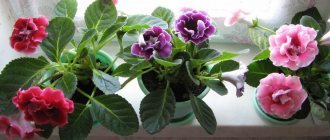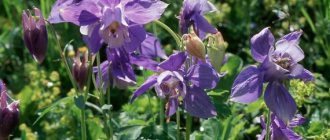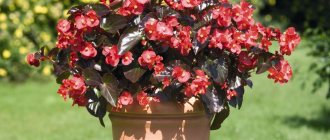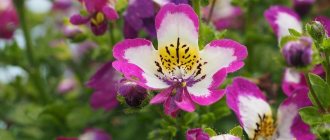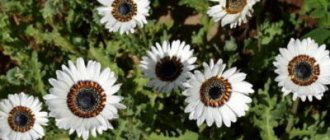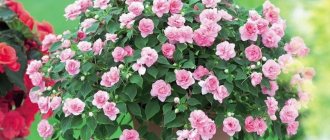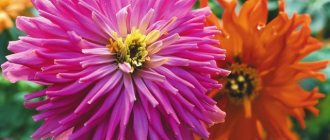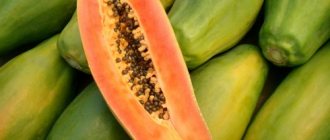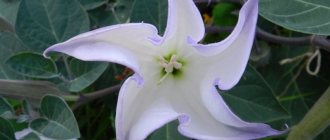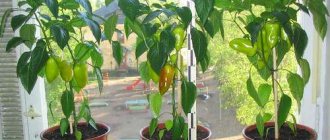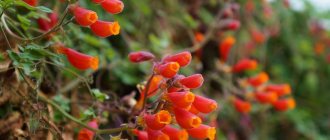17343
Juniper is an attractive plant to grow on site; it easily adapts to unfavorable conditions and saturates the air with a pine aroma. If you want to acquire additional specimens for planting, you can germinate juniper from seeds at home. This method of propagation is not the most popular, but with due effort it becomes possible to grow many strong seedlings. The secret of success is stratification, planting in nutritious soil. Experiments can be carried out in open ground and at home.
Features of growing juniper from seeds at home
Under natural conditions, juniper almost always reproduces by seeds. However, this process is long, and the seeds of this shrub do not have good germination. Therefore, the reproduction of juniper occurs very slowly; it is for this reason that in many regions the planting of this plant is protected at the legislative level. However, you can collect ripe cones from the bushes with complete peace of mind.
At home, you can propagate common juniper, as well as Cossack and some others, from seeds. Varietal characteristics will not be preserved with this method, so to breed ornamental varieties you need to use vegetative propagation methods. Grown seedlings can be used, for example, for rootstock when grafting. Common juniper can be used for single plantings or to create hedges.
Important! Juniper grown from seeds is the most long-lived, unpretentious and hardy.
Diseases
This crop is poorly resistant to disease. Even specimens that managed to germinate from seeds are not always able to avoid this fate. The most common diseases of juniper are rust, wilting of branches, and sunburn. Often the plant becomes a victim of various fungi.
Typically, these diseases occur in rainy and cool summers, so gardeners are advised to take preventive measures during this period. Thus, to prevent diseases, you can use the products “Fitosporin”, “Topsin M”, “HOM”.
The video below explains in detail how to grow coniferous trees from seeds.
Stratification of juniper seeds
Stratification is a mandatory procedure for juniper seeds. The essence of this process is to keep the seeds at subzero temperatures for a long time (3-4 months). This is a kind of hardening of seeds, significantly increasing their germination. In nature it occurs naturally.
To grow juniper from seeds at home, stratification is carried out either using a refrigerator or keeping the seeds outside under a layer of snow in a special container.
How to plant juniper seeds
Juniper can be planted either directly in open ground or in pre-prepared containers. However, it must be remembered that plants are transplanted to a permanent place only when they reach the age of 3-5 years. All this time they will require increased care, so it would be optimal to germinate juniper in containers and then grow it under cover.
Preparing containers and soil
You can plant juniper seeds in special containers or boxes. They are filled with a nutritious substrate from a mixture of sand and peat in a 1:1 ratio with the addition of sphagnum moss. As a growth stimulator, it is advisable to add a little soil from under an adult juniper to the container. It contains symbionts - fungi that have a beneficial effect on the growth of plant roots.
Seed preparation
To extract the seeds, ripe cones are pre-soaked in water or a weak acidic solution. They are then ground using a scarification method to break down their hard shell. The extracted seeds are dried and stored in a cool, dry place, placed for stratification or prepared for planting.
How to plant juniper seeds correctly
Sowing juniper seeds in containers with prepared soil is done in the fall, in October or November. Seeds are usually planted in rows, embedded in a moistened substrate to a depth of approximately 2-3 cm. After this, the containers are placed in the refrigerator or under the snow for stratification. It is possible to stratify seeds without planting them in the soil substrate. In this case, they are planted in open ground in the spring. They will remain in the ground until next spring, and then they will germinate.
Important! Seeds that have not been stratified can germinate only after several years.
Medicinal properties
Berries have many beneficial properties:
- have a diuretic, choleretic effect;
- stimulate the secretion of bile and gastric juice;
- stop inflammation;
- destroy bacteria;
- stimulate appetite;
- treats debilitating diarrhea;
- eliminates heartburn, flatulence;
- used in the treatment of diseases of the liver and biliary tract;
- strengthens the immune system, increases the body's protective functions;
- has an antitussive, expectorant effect;
- enhance intestinal motility.
Juniper berry extracts are included in biological products. Prescribed as an aid for diseases of the digestive and respiratory systems.
Recipes for folk remedies:
- Tea . Crush the berries, take 1 teaspoon, pour 200 ml of boiling water, leave for 10 minutes under a closed lid. Add sugar and honey to taste.
- Infusion . A tablespoon of crushed raw materials is poured into a glass of hot water, boiled over low heat for 15 minutes, and left to steep for 45 minutes. Strain, add boiled water to make 200 ml of the finished product. Can be stored in the refrigerator for about 2 days. Take 1 tbsp. spoon 4 times a day.
- Decoction . 10 g of crushed berries are poured into 400 ml of boiled water. Cook over low heat for 20 minutes. Infuse under a closed lid for 15 minutes. It is recommended to take 1 tbsp. spoon 4 times a day.
- Juice . Squeeze ripe berries using any convenient method. Take the medicine together with honey, 1 tbsp. spoons 4 times a day.
- Juniper alcohol . Pour 100 g of crushed berries with 0.5 liters of medical alcohol (70%), leave in a dark place for 14 days. Shake the jar or bottle periodically. Strain, pour into a glass container, and close. Store in a dark place. Use externally for compresses, rubbing, internally - 20 drops three times a day.
Currently reading: Why you shouldn't throw away banana peels
Medicine from juniper cannot be taken for a long time, since it has a bad effect on the kidneys, increases inflammatory processes, leads to poisoning, and the appearance of blood in the urine.
Caring for juniper seedlings at home
After planting juniper seeds, it is necessary to regularly loosen the soil in the container with the planted seeds. After the emergence of seedlings, you need to carefully monitor the dynamics of their growth. Since seeds are sown, as a rule, many times in excess of the required quantity, in the future it will be necessary to cull, leaving only the strongest and tallest seedlings for growing.
Optimal growing conditions
It is recommended to keep juniper seedlings growing in a container on the window. In the warm season, they can be taken out into the fresh air, for example, onto a balcony or veranda. It is necessary to regularly loosen the soil and remove small weeds. In winter, you need to carefully monitor the temperature and humidity in the room where the seedlings are growing. In heated rooms, the humidity in winter is very low, so the soil with seedlings can easily dry out.
If the apartment has a glazed and insulated balcony, plants can be kept there. The main thing is that the air temperature does not fall below + 10-12 °C. There are no other special conditions for growing juniper seedlings.
Important! For the normal growth of seedlings, fresh air is of exceptional importance, so the room must be ventilated as often as possible.
Watering and fertilizing
The soil in the container should be regularly moistened; it would not be a bad idea to spray the seedlings themselves with water from a spray bottle. However, this must be done carefully. Stagnation of water in the roots has a very negative effect on the health of seedlings and can lead to their death. There is no need to feed the seedlings. The nutrient substrate contains all the necessary substances for the normal development of the plant.
Other events
All other activities, such as pruning or covering for the winter, are carried out after the plant is planted in open ground. Until this time, juniper is not pruned. And even after planting it in a permanent place in the garden, the plant is not touched for another year or two, giving the shrub the opportunity to properly take root and adapt to the new place.
Feeding rule
Fertilizers are applied in the spring. When propagation is carried out by cuttings or a prepared seedling is planted, then the soil is fertilized every year in the spring. In summer, this is done when the plant grows poorly due to a lack of nutrients.
If you know some points, you can see whether the plant has enough of a particular microelement:
- if the needles turn yellow, then this is a clear sign of magnesium deficiency;
- disruption of leaf shapes or their death is a sign of a large amount of nitrogen.
The plant cannot grow without fertilizer. You need to know what kind of soil juniper prefers. If you take into account all these rules, then it is possible to grow a healthy coniferous plant with beautiful needles.
Transplantation into open ground
Planting and caring for juniper grown from seeds is no different from caring for species obtained by vegetative propagation or taken from a nursery. Transplantation of grown seedlings to a permanent place is carried out after they reach the age of 3 years. It is better to do this in the spring, from the beginning of April to the end of May. Seedlings with a closed root system can be planted in the fall, in September or early October. Later planting may result in the plant not having time to adapt to the new location and dying in the winter.
The landing site is important. Most juniper varieties prefer open sunny areas, but they also tolerate light partial shade. It is advisable that the place is closed from the north wind. Common juniper is undemanding in terms of soil composition, but it is better to choose an area with light, breathable sandy soil. It should not be swampy; even after rains, water should not stagnate on it. Common juniper prefers to grow on soils with a neutral acidity level, while Cossack juniper feels better on calcareous soils.
Planting holes for juniper seedlings must be prepared in advance so that the soil has time to settle and become saturated with air. If the soil is loamy, then a drainage layer of coarse gravel or broken brick is placed at the bottom with a layer of 15-20 cm. The size of the hole should be larger than the earthen ball on the roots of the seedling. For backfilling, it is better to use specially prepared soil from a mixture of river sand, peat and turf soil. It is recommended to pre-calcinate the sand to destroy harmful microflora.
Important! As an additional fertilizer, you can add 200-300 g of nitroammophoska to the soil.
The procedure for planting a juniper bush is very simple. The seedling is placed vertically in the hole and covered with nutrient soil. In this case, the root collar is not buried; it should be at the same level with the surface of the earth, and for large bushes a little higher. After planting, the root zone is shed generously with water and mulched with peat or tree bark. It is advisable to place a fence made of plastic or metal mesh around the seedling. This will serve as protection from domestic animals who love to mark coniferous trees. And for a young seedling, animal urine can be destructive because it has a strong alkaline reaction.
Important! To easily remove a seedling along with a lump of earth from the pot in which it grew, half an hour before planting, you should generously spill the root zone with water.
Preparing for landing
Successful production of juniper seedlings at home depends on the choice of suitable soil, quality and pre-sowing preparation of seeds (stratification and scarification).
Soil preparation
A loose and light substrate is suitable for growing decorative conifers from seeds. You can purchase ready-made soil for coniferous plants at a garden store. It’s not difficult to prepare the soil yourself. To do this, mix 2 parts of peat, 1 part of turf or leaf humus and 1 part of coarse river sand. This composition is considered basic for all types of juniper. But, each variety has preferences that must be taken into account. For example, the Virginian type of conifer requires the addition of clay to the substrate (up to 20%), and the Cossack type needs soil with an alkaline reaction. This is ensured by adding ash to the soil (a glass per bucket of the mixture) or dolomite flour in the same dose.
The culture is not demanding on the fertility of the substrate. No fertilizer is needed to sow seeds. Already growing seedlings begin to be fed with mineral fertilizers.
Advice. When preparing the soil yourself, all components should be spilled with a hot solution of potassium permanganate or Fitosporin to destroy fungal spores.
Seed preparation
To propagate juniper, purchase or independently collected seeds are used. It must be remembered that fresh planting material has greater germination energy than that stored for several years.
Important. Hybrid varieties of juniper do not transfer their properties through seed propagation. Seeds can be used to sow common juniper, Cossack juniper, and scaly juniper.
At home, seeds are harvested from mature plants (at least 2 years old) in September. The cones are collected when they have begun to darken, but have not yet opened. They are laid out warmly on a clean cloth or paper. Gradually the cone ripens and opens, the seeds spill out onto the litter.
Ripe berries are mashed and washed in water, removing the seeds.
Unprepared seeds have low germination; processing them will help correct the situation.
- Scarification. You can destroy the hard shell of the seed using an emery sheet. Pour seeds into a box or bowl lined with sandpaper and cover them with the same sheet. The seeds are ground between sheets with a rough surface, violating the integrity of the shell.
- Stratification or cold treatment. Necessary to imitate the natural conditions of juniper germination. Seeds, immersed in a substrate of sand and peat, are buried in the snow in the garden or put in the vegetable section of the refrigerator for 4-5 months.
If there is a large volume of seeds, you can immediately after collecting and scarification, sow them on a prepared bed (in October - November). Under favorable weather conditions, they will undergo stratification naturally.
When sowing a small amount of seeds, it is recommended to keep the seeds in the cold and sow them in pots in the spring. The percentage of germination will be higher.
Step-by-step instruction
In the fall, conifers are planted in open ground when frost begins to grip the soil. In the Moscow region, this is the end of October - beginning of November. Spring sowing of seeds for seedlings is carried out in March, in open ground - as soon as the soil thaws.
- On a prepared bed in open ground or in plastic pots, boxes, juniper is sown to a depth of 15-18 mm. The distance between seeds is 2-3 cm, between rows 5-7 cm.
- The seeds are sprinkled on top with a mixture of peat and sand. It is useful to use sifted pine litter or soil taken from under an adult juniper to fill the seeds.
- The substrate in the seedling containers is moistened.
Shoots may appear within a month, not all at once. The gardener needs to maintain moderate soil moisture and place the seedling boxes in a bright place.
The optimal temperature for seed germination is +18 +20 degrees.
If the seeds were prepared correctly and the soil for juniper is suitable, the germination rate of the conifer will be up to 80%.
